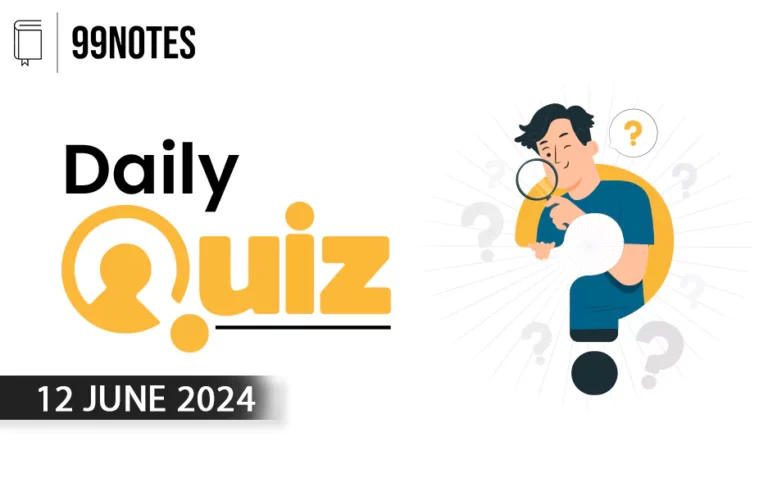24 August 2024 : Indian Express Editorial Analysis
1. Death of a reform
(Source: Indian Express; Section: The Editorial Page; Page: 14)
| Topic: GS2– Governance |
| Context: |
|
What is a Lateral Entry Scheme?
- Lateral entry refers to the process of appointing individuals from outside the government directly to mid-level and senior positions.
- It aims to bring in domain-specific expertise and fresh perspectives to enhance governance.
- These ‘lateral entrants’ are appointed on contracts for 3 years, which can be extended to a maximum of 5 years.
- Origin and Implementation:
- The concept of lateral entry was first introduced under the 2004-09 and was strongly endorsed by the Second Administrative Reforms Commission (ARC) established in 2005.
- It was later recommended by NITI Aayog in 2017 to bring in expertise and fresh perspectives.
- In 2017, NITI Aayog, in its 3-year Action Agenda, and the Sectoral Group of Secretaries (SGoS) on Governance recommended the induction of personnel at middle and senior management levels in the central government.
- Eligibility:
- Individuals with domain expertise and a proven track record in relevant fields from the private sector, state governments, autonomous bodies, or public sector undertakings are eligible to apply for these positions.
- The selection criteria typically emphasise professional accomplishment and subject matter expertise.
Political Paralysis and Reform Reversal
- The article criticizes the ruling Bharatiya Janata Party (BJP) for its inability to push forward with the lateral entry scheme despite its initial introduction. It attributes this failure to a weakened Prime Minister and a confused party leadership that lacks the courage to implement necessary reforms in the face of opposition.
- The Congress-led opposition, according to the article, has also contributed to this outcome by opposing the scheme for political gains, focusing on caste-based politics rather than long-term development goals.
- This political stalemate has resulted in the shelving of a reform that could have significantly improved governance in India.
The Importance of Lateral Entry in Governance
- The lateral entry scheme was seen as a vital reform to address the inefficiencies within India’s administrative system.
- The article argues that the country’s governance structure requires professionals with specialized knowledge and expertise, especially in an increasingly complex world.
- The current system, dominated by the Indian Administrative Service (IAS), often lacks the deep domain knowledge necessary for effective governance.
- By bringing in experts from the private sector, academia, and other fields, the scheme aimed to enhance the quality of governance and better serve the nation’s diverse needs.
The Debate Over Reservations and Social Justice
- A significant point of contention surrounding the lateral entry scheme is the issue of reservations for Scheduled Castes (SCs), Scheduled Tribes (STs), and Other Backward Classes (OBCs).
- The article contends that imposing mandatory quotas on lateral entry would defeat the purpose of the reform, which is to bring in the most competent and qualified individuals regardless of their caste or community.
- While acknowledging the importance of social justice, the article argues that the focus should be on ensuring efficient and effective governance that benefits all citizens, particularly those from marginalized communities, rather than on fulfilling caste-based quotas.
Learning from International Practices
- The article also highlights the practice of lateral entry in other countries, such as the United States and China, where specialists from various sectors are regularly brought into government service.
- This approach has been successful in improving governance by leveraging the expertise of professionals who may not be part of the traditional civil service.
- The article suggests that India could benefit from adopting a similar model, ensuring that its governance structure reflects both competence and diversity without compromising on either.
Conclusion: The Need for a Balanced Approach
- In conclusion, the article calls for a balanced approach to lateral entry in India’s administrative system.
- It emphasizes the need for reforms in education and professional development to build competencies among underrepresented sections of society, ensuring that they can compete for lateral entry positions on merit.
- At the same time, it argues that public servants, regardless of their entry route, should prioritize their duty to serve the nation above all other identities.
- The failure to implement the lateral entry scheme, as envisioned, is seen as a missed opportunity for India to modernize its governance and better meet the needs of its population.
| ARC Recommendations on Lateral Entry Scheme |
Arguments in Favour:
Arguments Against:
|
| PYQ: “Institutional quality is a crucial driver of economic performance”. In this context suggest reforms in Civil Service for strengthening democracy. (150 words/10m) (UPSC CSE (M) GS-2 2020) |
| Practice Question: Discuss the potential benefits and drawbacks of the lateral entry scheme in the context of India’s administrative needs. Additionally, analyze the impact of reservation policies on the effectiveness of such reforms. How can India strike a balance between ensuring social justice and maintaining the efficiency and competence of its civil services? (250 words/15 m) |



